Brainstorming & Concepts
User Needs:
(user needs last edited 12-12-2021)
Must Haves:
Device…
- Improves audio clarity of a speaker wearing a mask
- Allows for better comprehension of what a speaker with a mask is saying
- Allows functionality of mask (decreases COVID-19 spread)
- Is comfortable for the speaker, and can be worn for long periods of time
- Does not inhibit the speaker’s ability to breathe
- Can be disinfected and reused
- Is made of material that is non-toxic to breathe and hypoallergenic for skin contact
Nice to Haves:
Device…
- Works in conjunction with any face covering
- Allows audience to read lips/text of speech
- Is Affordable and easy to make
- Is fashionable
- Is easy to manufacture
- Improves audio volume of a speaker wearing a mask
- Reduces internal echo within the mask
- Fits on the face in harmony with other devices (glasses, hearing aids, etc.)
Concepts:
As the first step in our brainstorming process we made a collective document with many ideas and narrowed it down to several ideas which we go into more details below https://docs.google.com/document/d/1vxjWn7rK33cRLSpsef9E396OdteHOLwOD7R-VDVJmTo/edit
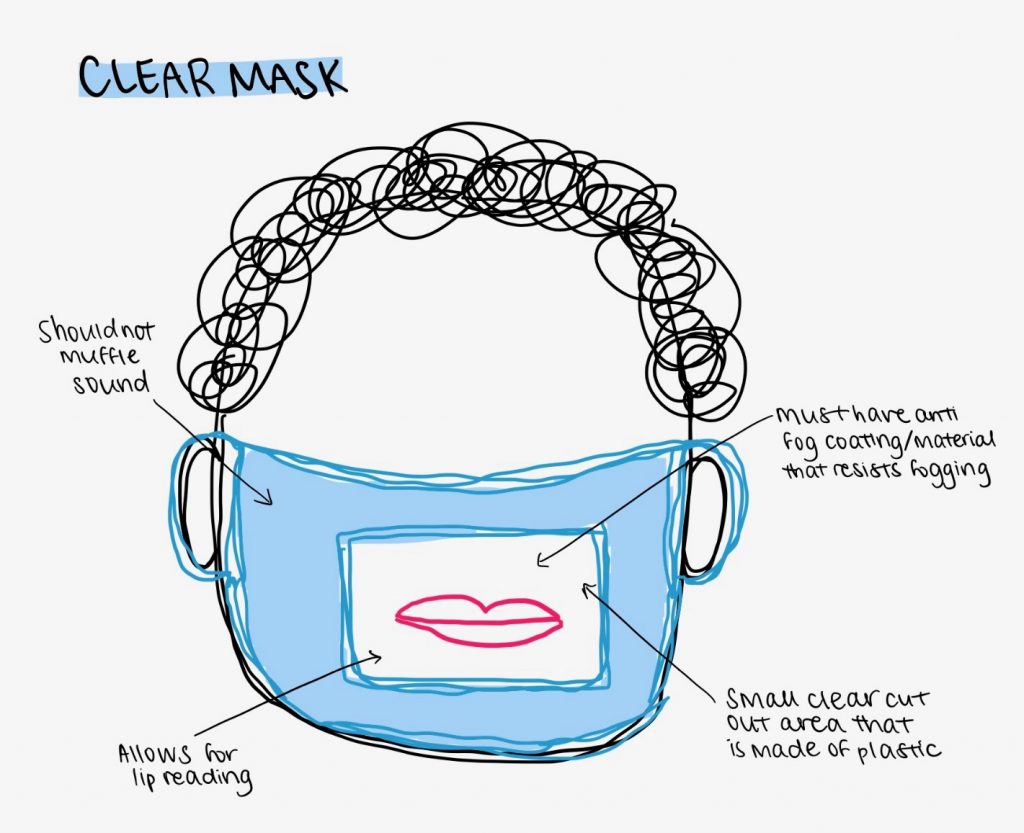
Clear Mask: This mask will have a transparent material in the area in front of the mouth. These currently exist, but they have many negative aspects. For example, currently, these masks fog up and make it so that you cannot see through to the lips. In order to fix that, this mask can have an anti fog coating that allows for a clear view of the lips no matter how long it is worn. Also, these tend to muffle sound more than the typical masks. In order to prevent that, the material the window is made out of should allow for sound to pass through without allowing disease to also pass through.
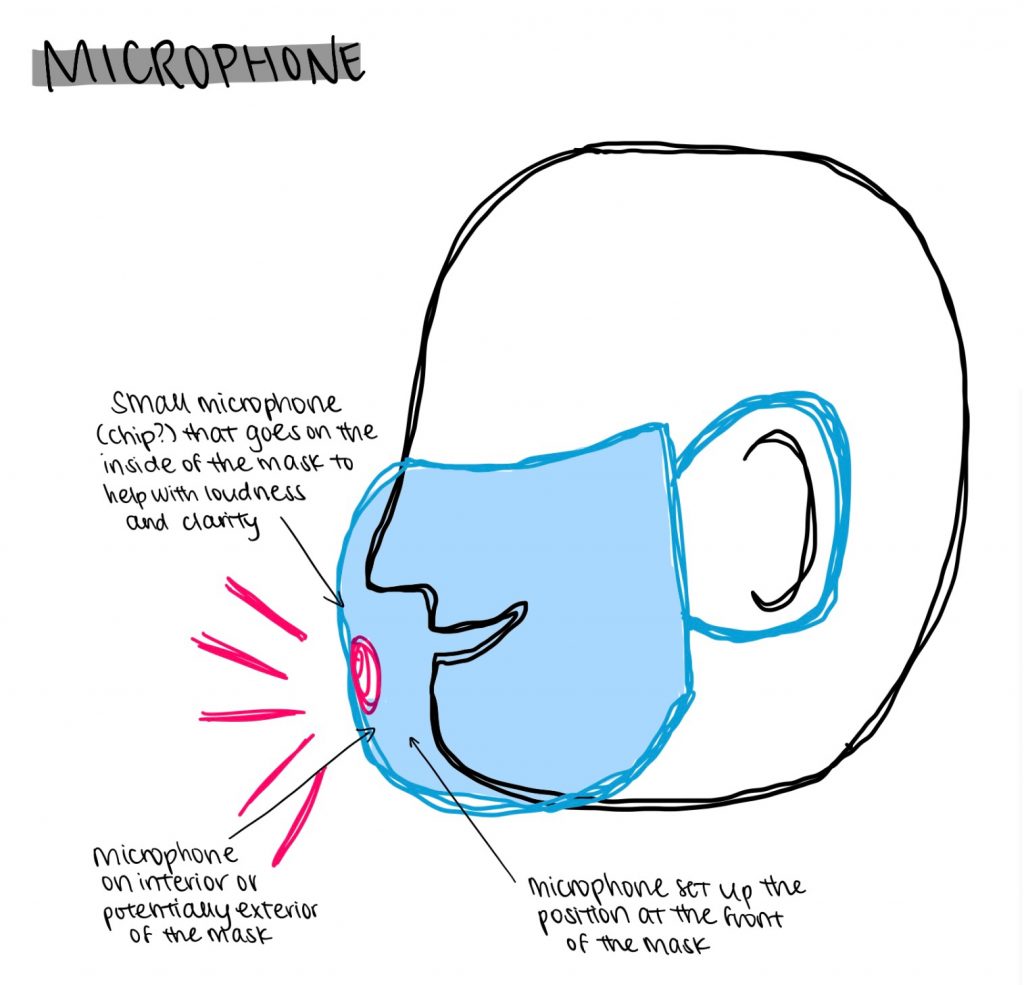
Microphone: Ideally, this would be a microphone that has the ability to be embedded on the inside of a speakers mask. The BME 93 professor uses a microphone on the outside of his mask and it does a good job at amplifying the noise, but the clarity of the speech is still poor due and sometimes undecipherable due to the muffling of the mask. The microphone needed for this would need to be small enough to fit comfortably inside the mask and this would be assessed by our testing and personal reviews. It would also need to be able to connect to a speaker somewhere to project the speaking it is receiving, this could perhaps be a portable Bluetooth speaker or speakers that are in a classroom/lecture hall. A wired connection could cause issues with comfort and movability of the person speaking in relation to the speaker. The quality would also have to be high enough that the speech can be understood despite the small size and closeness to the speakers mouth

Mouth Guard Lip Reading Mask: This mask will have the usual material attaching it to the ears, but will also attach to the mouth of the user via a mouth guard in order to make the mask move with the lips of the wearer. While the drawing above has the mask inside the mouth, the mouth guard device could simply had small protrusions that would attach to the mask outside of the mouth, still allowing it to move in two parts like lips. This will allow others to read the lips of the wearer. Comfort is key for this design as the mouth guard apparatus has great potential to feel weird for the user. Additionally, this is a device that definitely needs to be cleaned as it will be in the speaker’s mouth.
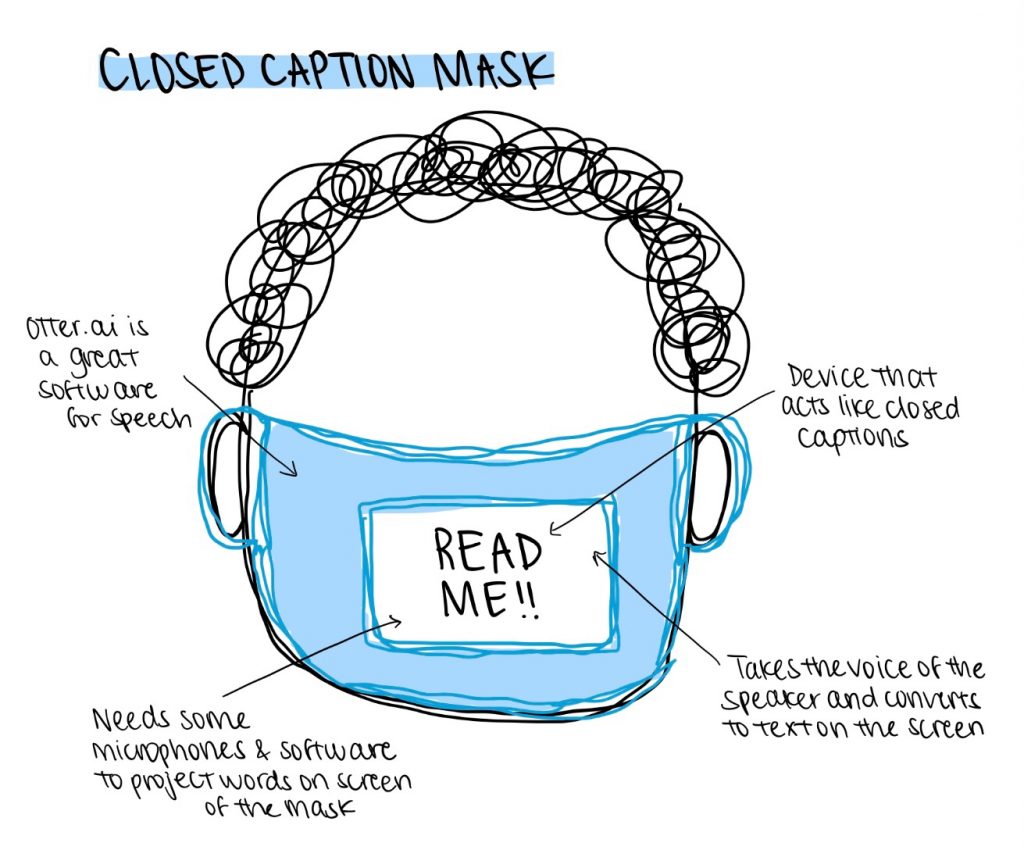
Closed-Caption Mask: This concept would feature a microphone that would pick up what the speaker was saying and transmit this information to a small computer with a display on the outside of the mask that would show the words the speaker had said. Otter.ai is a potential software that could be applied. This could also be used in conjunction with some sort of phone app in order to minimize the amount of electronics necessary to be attached to the mask itself. Obviously, this is a bit more difficult and expensive of a product to design and produce, and it would only work with people that were close enough to the display to read unless speakers in large lecture room type environments utilized bigger screens separate from the mask.
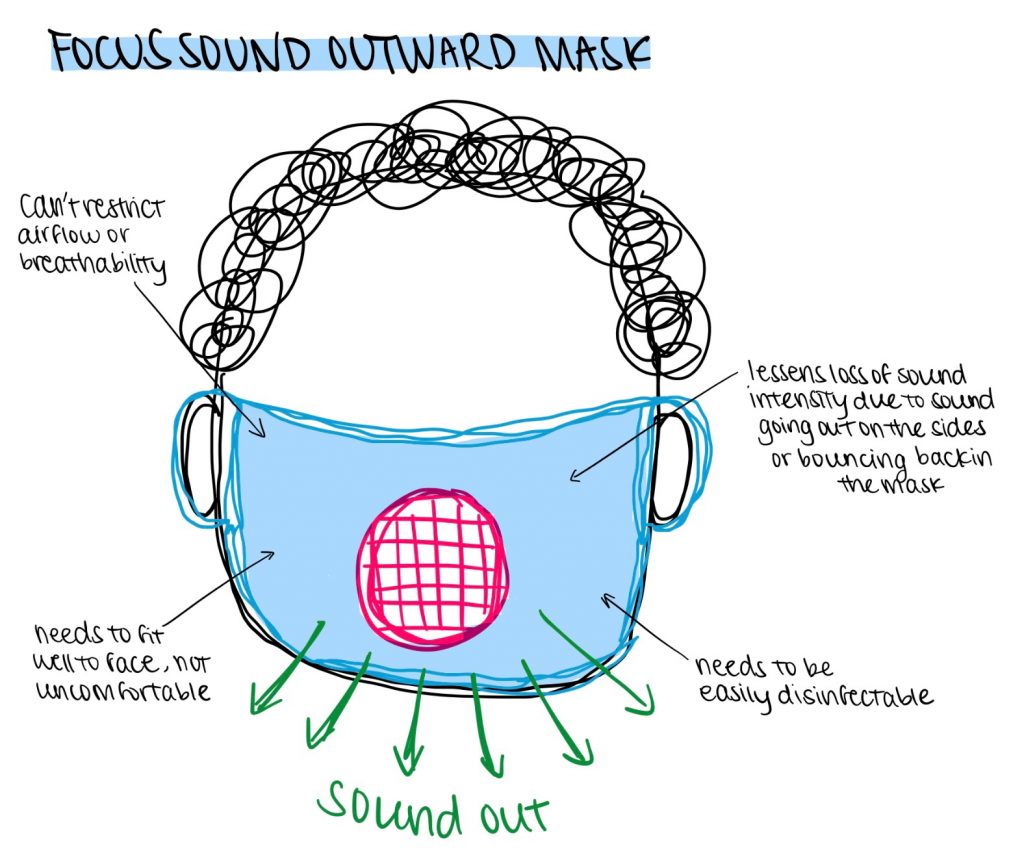
Outward Projection Device: This is a plastic device that would not only separate the mask from the person’s face but also focus the sound from their mouth towards the front of the mask. In theory, this would mitigate some of the sound lost out of the sides of the mask, and it would prevent more muffling from the mask being right up against the user’s mouth.
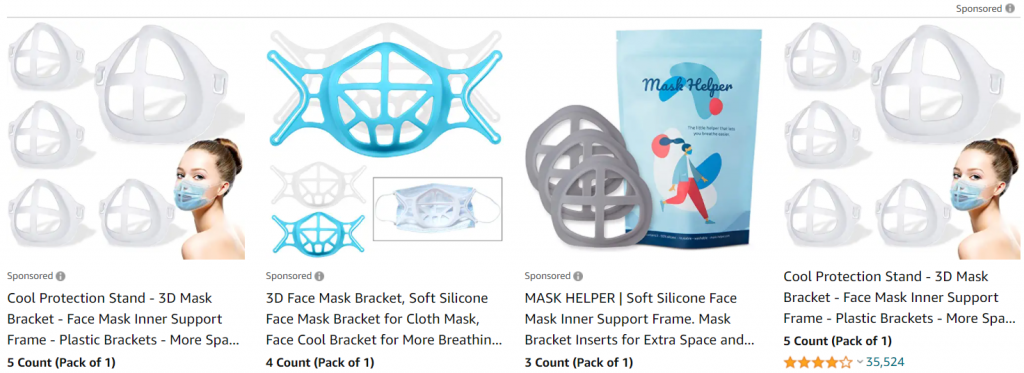
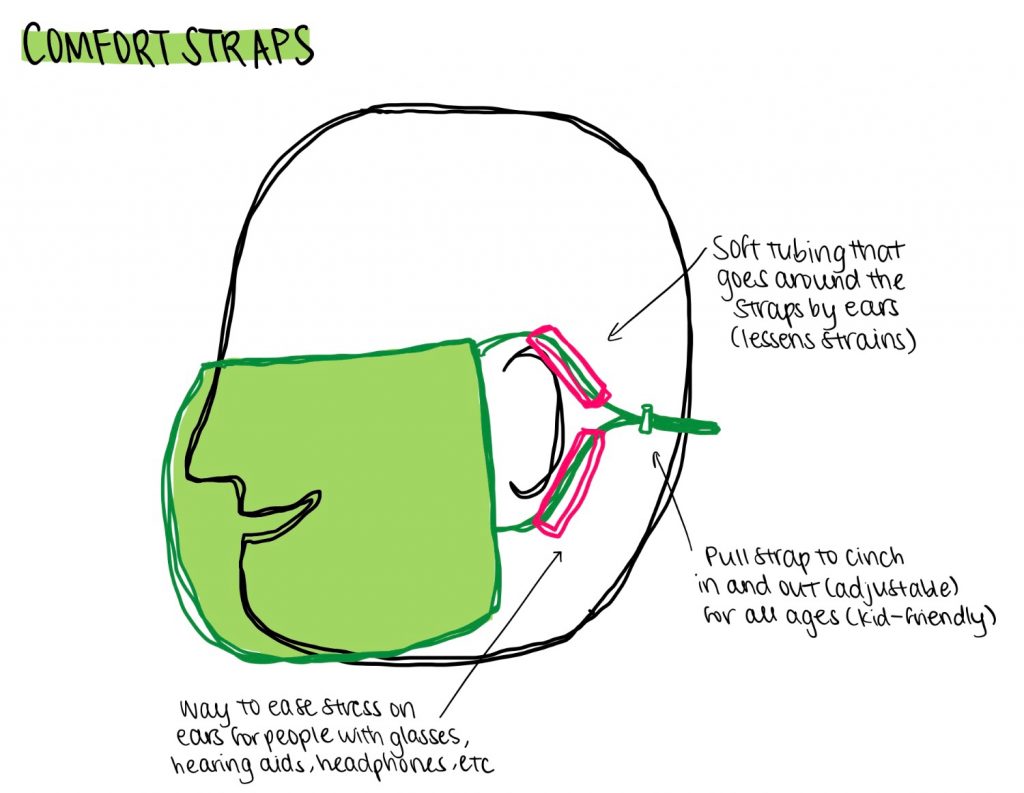
Comfort Straps: This is a supplementary idea derived from some of the issues our interviewees had with masks in general. Both the elementary school teacher and the surgeon mentioned discomfort around the ears, especially with the cheaper masks that are used for the general public. The elementary school teacher also emphasized that her students sometimes have trouble keeping their masks on as the straps can be loose for those with smaller heads. This tube system would allow for less stress on the ears by using a softer material that would spread out the force of the mask. There would be an opening to cinch the mask strap so the user could pull it to their desired length for a perfect fit.
Click here for a Pugh Matrix of our top ideas!
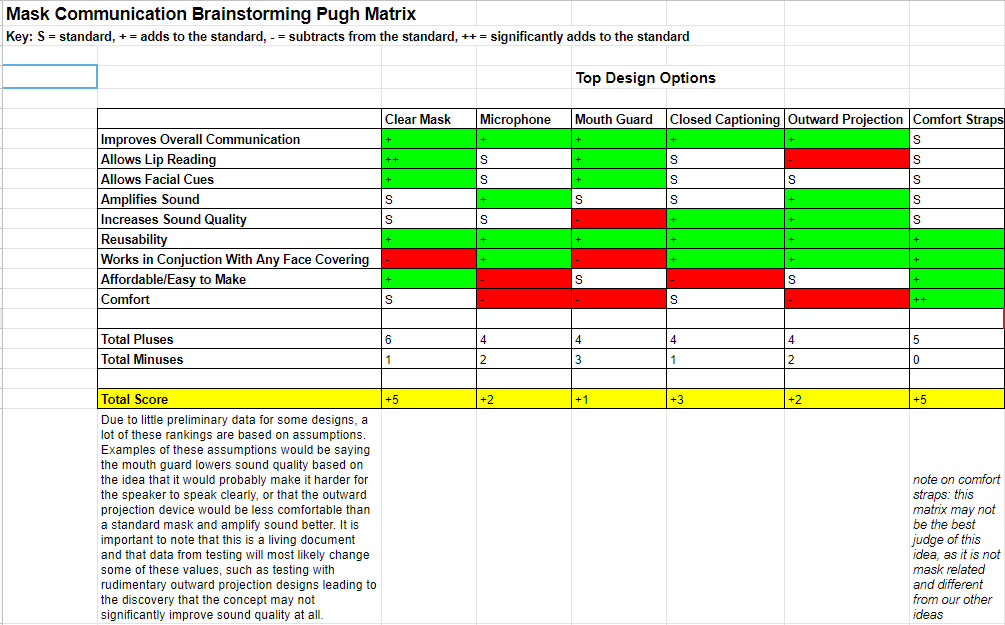
Recent Comments